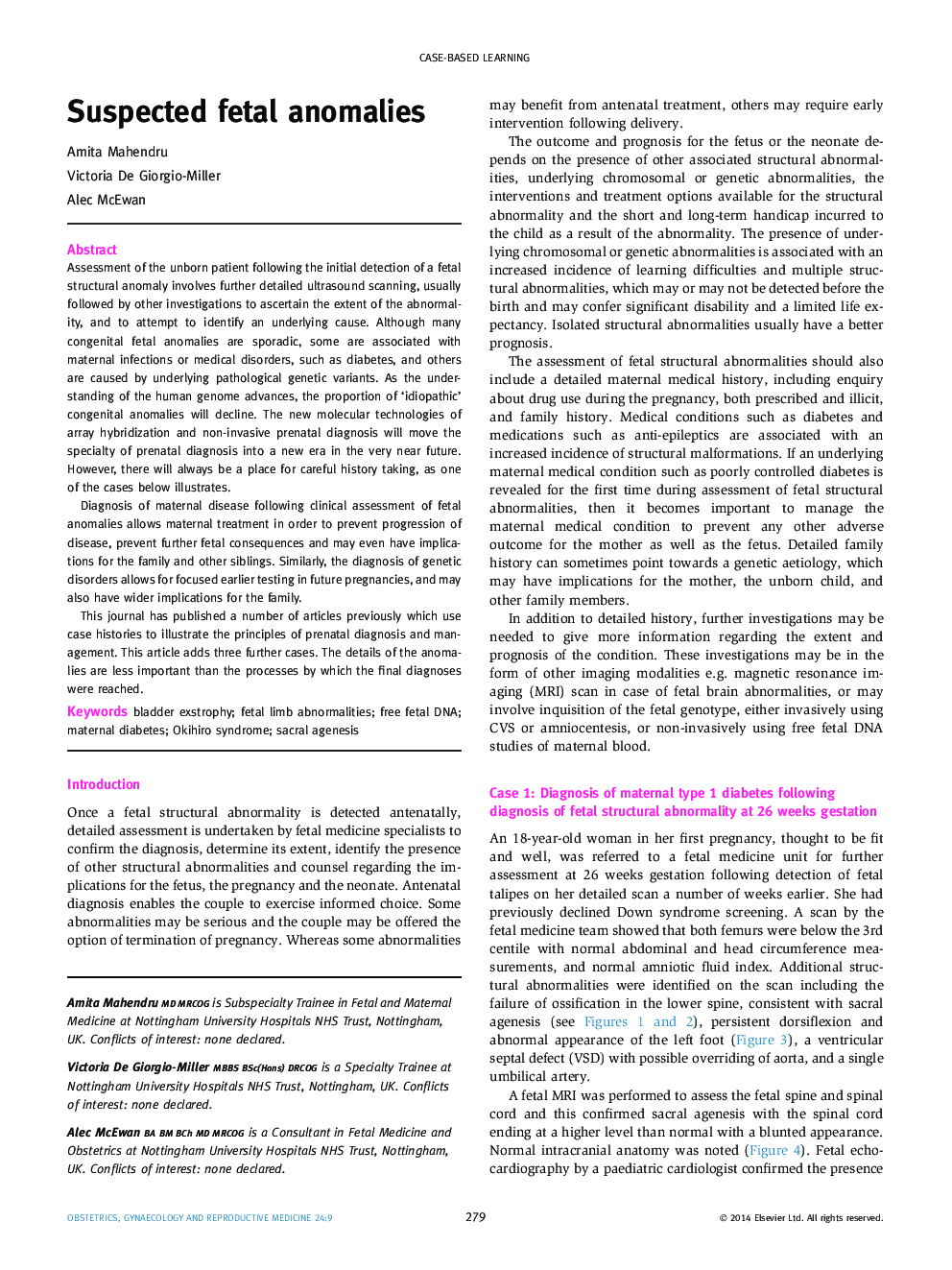| Article ID | Journal | Published Year | Pages | File Type |
|---|---|---|---|---|
| 3966620 | Obstetrics, Gynaecology & Reproductive Medicine | 2014 | 7 Pages |
Assessment of the unborn patient following the initial detection of a fetal structural anomaly involves further detailed ultrasound scanning, usually followed by other investigations to ascertain the extent of the abnormality, and to attempt to identify an underlying cause. Although many congenital fetal anomalies are sporadic, some are associated with maternal infections or medical disorders, such as diabetes, and others are caused by underlying pathological genetic variants. As the understanding of the human genome advances, the proportion of ‘idiopathic’ congenital anomalies will decline. The new molecular technologies of array hybridization and non-invasive prenatal diagnosis will move the specialty of prenatal diagnosis into a new era in the very near future. However, there will always be a place for careful history taking, as one of the cases below illustrates.Diagnosis of maternal disease following clinical assessment of fetal anomalies allows maternal treatment in order to prevent progression of disease, prevent further fetal consequences and may even have implications for the family and other siblings. Similarly, the diagnosis of genetic disorders allows for focused earlier testing in future pregnancies, and may also have wider implications for the family.This journal has published a number of articles previously which use case histories to illustrate the principles of prenatal diagnosis and management. This article adds three further cases. The details of the anomalies are less important than the processes by which the final diagnoses were reached.
